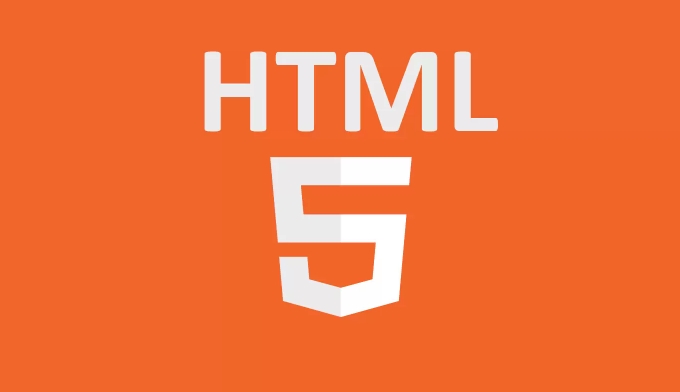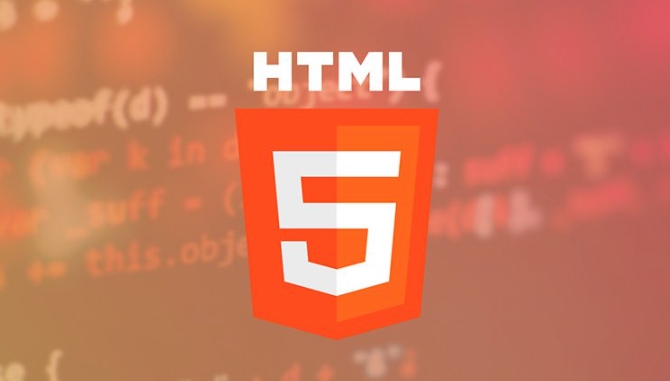Getting the user's current location with the HTML5 Geolocation API.
When using the HTML5 Geolocation API to obtain user location, you must first obtain user authorization, and request and explain the purpose at the right time; the basic method is navigator.geolocation.getCurrentPosition(), which contains successful callbacks, wrong callbacks and configuration parameters; common reasons for failure include permission denied, browser not supported, network problems, etc., alternative solutions and clear prompts should be provided. The specific suggestions are as follows: 1. Request permissions when the user operation is triggered, such as clicking the button; 2. Use enableHighAccuracy, timeout, maximumAge and other parameters to optimize the positioning effect; 3. Error handling should distinguish different error codes and give corresponding prompts; 4. Provide alternative ways to manually enter the location to enhance the user experience.

Getting the user's current location is the basic feature of many modern web applications, such as weather forecasting, map navigation, or location-based services. The Geolocation API for HTML5 provides a simple and straightforward way to allow websites to request and obtain user geolocation information.

However, although this function is easy to use, it also has its limitations and precautions. Let’s take a look at how to use it correctly from a few practical perspectives.

Users must actively authorize access to locations
The Geolocation API is designed to require users to explicitly authorize. When you call navigator.geolocation.getCurrentPosition() , the browser will pop up a prompt box asking the user whether to allow the website to access their location.
If your website frequently requests targeting permissions, or suddenly requests without context, users may reject or even block your request. Therefore, it is recommended:

- Trigger a location request at the right time , such as a button like "Find a nearby store" or "Get current weather".
- First give a brief description to tell the user why location information is needed so that they are more willing to authorize.
Basic methods and parameters for obtaining locations
The Geolocation API provides several core methods, the most commonly used is getCurrentPosition() , which accepts three parameters:
navigator.geolocation.getCurrentPosition( successCallback, errorCallback, options );
-
successCallback: The callback function executed after successfully obtaining the position, including latitude and longitude and other information. -
errorCallback: executes if the user refuses or the device cannot get the location. -
options: Optional configuration items, such as whether high precision, timeout, and maximum cache time are enabled.
Common configurations are as follows:
-
enableHighAccuracy: true(enable GPS and other higher precision positioning methods) -
timeout: 10000(maximum time to wait for positioning, in milliseconds) -
maximumAge: 0(Setting to 0 means that the cache is not used)
Common causes and handling suggestions for failed location
Even if you call the API correctly, you may not be able to get the location data smoothly. Common causes of failure include:
- User rejected permission request
- The browser does not support the Geolocation API
- The device has no network connection or the GPS signal is weak
- Timeout or location service response slow
To enhance the user experience, you can do these things:
- Check if the browser supports it:
if ("geolocation" in navigator) - Give clear error prompts such as "Cannot get your location, please check the network or try again later"
- Provides alternatives to manually input locations
For example, in the error callback you can write this:
function errorCallback(error) {
switch(error.code) {
case error.PERMISSION_DENIED:
console.log("The user rejected the location request");
break;
case error.POSITION_UNAVAILABLE:
console.log("Location information is not available");
break;
case error.TIMEOUT:
console.log("Location timeout");
break;
default:
console.log("Unknown Error");
}
}Basically that's it. The Geolocation API is not complicated to use, but to make it work stably, it also needs to consider user authorization processes, error handling, and performance differences between different devices. As long as it is used reasonably, it is a very practical front-end tool.
The above is the detailed content of Getting the user's current location with the HTML5 Geolocation API.. For more information, please follow other related articles on the PHP Chinese website!

Hot AI Tools

Undress AI Tool
Undress images for free

Undresser.AI Undress
AI-powered app for creating realistic nude photos

AI Clothes Remover
Online AI tool for removing clothes from photos.

Clothoff.io
AI clothes remover

Video Face Swap
Swap faces in any video effortlessly with our completely free AI face swap tool!

Hot Article

Hot Tools

Notepad++7.3.1
Easy-to-use and free code editor

SublimeText3 Chinese version
Chinese version, very easy to use

Zend Studio 13.0.1
Powerful PHP integrated development environment

Dreamweaver CS6
Visual web development tools

SublimeText3 Mac version
God-level code editing software (SublimeText3)
 Integrating CSS and JavaScript effectively with HTML5 structure.
Jul 12, 2025 am 03:01 AM
Integrating CSS and JavaScript effectively with HTML5 structure.
Jul 12, 2025 am 03:01 AM
HTML5, CSS and JavaScript should be efficiently combined with semantic tags, reasonable loading order and decoupling design. 1. Use HTML5 semantic tags, such as improving structural clarity and maintainability, which is conducive to SEO and barrier-free access; 2. CSS should be placed in, use external files and split by module to avoid inline styles and delayed loading problems; 3. JavaScript is recommended to be introduced in front, and use defer or async to load asynchronously to avoid blocking rendering; 4. Reduce strong dependence between the three, drive behavior through data-* attributes and class name control status, and improve collaboration efficiency through unified naming specifications. These methods can effectively optimize page performance and collaborate with teams.
 Explaining the HTML5 `` vs `` elements.
Jul 12, 2025 am 03:09 AM
Explaining the HTML5 `` vs `` elements.
Jul 12, 2025 am 03:09 AM
It is a block-level element, suitable for layout; it is an inline element, suitable for wrapping text content. 1. Exclusively occupy a line, width, height and margins can be set, which are often used in structural layout; 2. No line breaks, the size is determined by the content, and is suitable for local text styles or dynamic operations; 3. When choosing, it should be judged based on whether the content needs independent space; 4. It cannot be nested and is not suitable for layout; 5. Priority is given to the use of semantic labels to improve structural clarity and accessibility.
 Understanding HTML5 Media Source Extensions (MSE)
Jul 08, 2025 am 02:31 AM
Understanding HTML5 Media Source Extensions (MSE)
Jul 08, 2025 am 02:31 AM
MSE (MediaSourceExtensions) is part of the W3C standard, allowing JavaScript to dynamically build media streams, thus enabling advanced video playback capabilities. It manages media sources through MediaSource, stores data from SourceBuffer, and represents the buffering time range through TimeRanges, allowing the browser to dynamically load and decode video clips. The process of using MSE includes: ① Create a MediaSource instance; ② Bind it to an element; ③ Add SourceBuffer to receive data in a specific format; ④ Get segmented data through fetch() and append it to the buffer. Common precautions include: ① Format compatibility issues; ② Time stamp pair
 What are the new input types available in HTML5 forms?
Jul 12, 2025 am 03:07 AM
What are the new input types available in HTML5 forms?
Jul 12, 2025 am 03:07 AM
HTML5introducednewinputtypesthatenhanceformfunctionalityanduserexperiencebyimprovingvalidation,UI,andmobilekeyboardlayouts.1.emailvalidatesemailaddressesandsupportsmultipleentries.2.urlchecksforvalidwebaddressesandtriggersURL-optimizedkeyboards.3.num
 How to access user's current location with the HTML5 Geolocation API?
Jul 13, 2025 am 02:23 AM
How to access user's current location with the HTML5 Geolocation API?
Jul 13, 2025 am 02:23 AM
To get the user's current location, use the HTML5 GeolocationAPI. This API provides information such as latitude and longitude after user authorization. The core method is getCurrentPosition(), which requires successful and error callbacks to be handled; at the same time, pay attention to the HTTPS prerequisite, user authorization mechanism and error code processing. ① Call getCurrentPosition to get the position once, and an error callback will be triggered if it fails; ② The user must authorize it, otherwise it cannot be obtained and may no longer be prompted; ③ Error processing should distinguish between rejection, timeout, location unavailable, etc.; ④ Enable high-precision, set timeout time, etc., and can be configured through the third parameter; ⑤ The online environment must use HTTPS, otherwise it may be restricted by the browser.
 Submitting Form Data Using New HTML5 Methods (FormData)
Jul 08, 2025 am 02:28 AM
Submitting Form Data Using New HTML5 Methods (FormData)
Jul 08, 2025 am 02:28 AM
It is more convenient to submit form data using HTML5's FormData API. 1. It can automatically collect form fields with name attribute or manually add data; 2. It supports submission in multipart/form-data format through fetch or XMLHttpRequest, which is suitable for file upload; 3. When processing files, you only need to append the file to FormData and send a request; 4. Note that the same name field will be overwritten, and JSON conversion and no nesting structure need to be handled.
 Displaying progress bars with the HTML5 `` tag.
Jul 08, 2025 am 02:24 AM
Displaying progress bars with the HTML5 `` tag.
Jul 08, 2025 am 02:24 AM
HTML5 tags can directly implement web page progress bars. 1. The basic usage is to set the value and max attributes, such as displaying 30% progress; 2. If the progress is unknown, the value can be omitted and only set max, which means an uncertain state; 3. You can customize the style through CSS, and browser compatibility needs to be handled; 4. It is often used in scenarios such as uploading files, form progress, and game loading; 5. Pay attention to avoid using it when the task is completed too quickly, and consider the compatibility issues of the old version of IE.
 Explain the `async` and `defer` attributes for scripts in HTML5.
Jul 13, 2025 am 03:06 AM
Explain the `async` and `defer` attributes for scripts in HTML5.
Jul 13, 2025 am 03:06 AM
The difference between async and defer is the execution timing of the script. async allows scripts to be downloaded in parallel and executed immediately after downloading, without guaranteeing the execution order; defer executes scripts in order after HTML parsing is completed. Both avoid blocking HTML parsing. Using async is suitable for standalone scripts such as analyzing code; defer is suitable for scenarios where you need to access the DOM or rely on other scripts.







